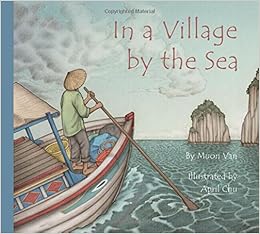Opening lines: It's always the little things / Small notions lost to the complex mind because of their innate simplicity/ Ideas beating on the subconscious like sand grains depositing themselves on shores until some kid scoops them up and notices/ That it is not just some gritty mortar muck.../ It's also something smaller...simpler.../ You have to see the big picture to build a sand castle/ But you have to appreciate the small picture to understand the sand./ I was always pretty smart.
Ted is a physicist near the midpoint of his career. His job is in jeopardy unless he can come through with a breakthrough in his research soon. When he finds out that his senile father-in-law worked as an MP and that Albert Einstein confided in him about some ideas he was working on, Ted sees a solution. All he has to do is get the information out of his hostile and incoherent father-in-law. Somewhere along the way, though, Ted begins to ask himself what it is he wants out of life.
Often graphic novels resist categorization. I cannot tell you whether this one counts as a YA book or whether it is only intended for adult audiences. There are some frank discussions of sexuality, puberty, impotence, and it is probably not suited for study in a high school classroom. Nor is it necessarily the sort of book that you wold find yourself recommending to a wide swath of students. But here is the thing: in spite of all of Ted's flailing attempts to make the life of a college physics researcher work for him -- in site of the ways he is neglecting his wife and children in pursuit of the fame of making a really big discovery -- in the end he finally figures out what is really important. And the final six pages or so are worth the price of the book. I think it might be a very good book for high school seniors trying to figure out what they want to do with their lives. Read it first, though. This is the sort of book that might easily be challenged -- for all the wrong reasons.
Mechner, Jordan; Pham, LeUyen; Alex Puvilland (2013) Templar New York: First Second

Opening lines: May 1291. I never saw Jerusalem, that holiest of holy places. The closest I got was Acre./ For twelve days our fortress held fast while the Saracens laid waste to the city. / Thousands took refuge with us. Women. Children. We shared with them what little we had./ Until our walls too came down. / So many brave men fell at acre.
Martin is one of the Knights Templar. He fought at Acre. He knows he is not the most perfect or praiseworthy knight, but he sees himself as someone who can bring help to those who need it. When political maneuvering by both the church and the state results in mass arrests and a massacre of the Knights Templar, and soon their order is openly defames and brought to trial, and their treasure captured, Martin, along with a rag-tag band of former Templars hatches a plan to steal the treasure back. What follows is an adventure of disguises, secret tunnels, bravery in the face of desperate odds, and more than a little bit of history. Martin's beloved, who has, during his time in the east, been forced to wed a nobleman helps fight for the cause. This graphic novel blends action and history in a way that is emotionally engaging. It is a really fun book to read.
The way in which the Templars are discredited and the bogus trials for those that turned themselves in might make this a good companion piece for any class studying The Crucible. It might work best for high school kids, though. One of the Knights Templar is a bit of a womanizer and there are some accusations that the Church makes against the knights that are unsavory, and so it would be best if teachers pre-read the book before using it in class, but it is the sort of class that could enliven either a history or an English class.








